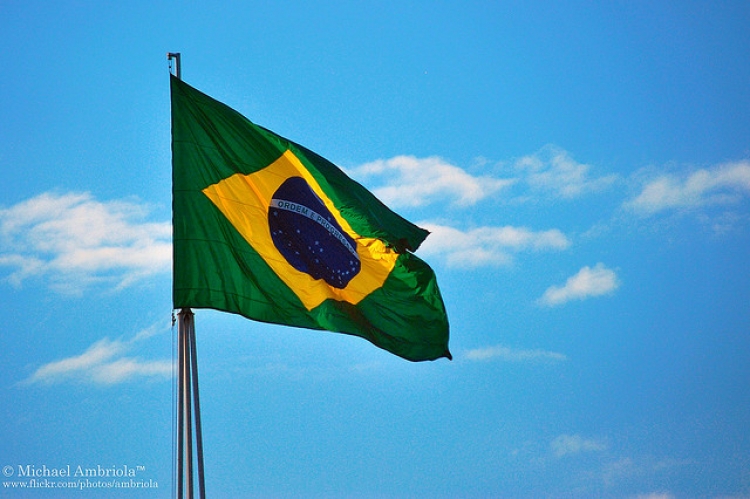 Brazil’s real led world gains, countering a slide in emerging-market currencies, as traders said a surge in dollar inflows from local exporters overcame signs of a slowdown in the nation’s top trading partner.
Brazil’s real led world gains, countering a slide in emerging-market currencies, as traders said a surge in dollar inflows from local exporters overcame signs of a slowdown in the nation’s top trading partner.
The real added 2.2 percent to 3.8592 per dollar Monday, the most among 16 major currencies tracked by Bloomberg, after the market reopened following two days of holidays. It had dropped as much as 0.5 percent as a decline in Chinese industrial company profits spurred a selloff in developing-country assets.
“Trading volume is considerably low, so any move tends to have a more significant impact on the real,” said Ricardo Gomes da Silva, a foreign-exchange director at Correparti Corretora de Cambio in Curitiba, Brazil. “Still, the focus remains on Brazil’s fiscal front.”
The Brazilian currency has tumbled 31 percent this year as President Dilma Rousseff’s administration struggles to shore up the nation’s finances and avoid further credit downgrades while Latin America’s largest economy heads toward the longest recession since the 1930s. Newly appointed Finance Minister Nelson Barbosa said last week that the government has no plans to relax next year’s fiscal target, without specifying how his team will achieve its goals if lawmakers block government legislation to raise taxes.
The head of Rousseff’s Workers’ Party, Rui Falcao, said Monday that Brazil should consider raising its inflation target to avoid further interest rate increases. Folha de S.Paulo newspaper earlier reported that some of the president’s advisers have expressed doubts about the need for monetary tightening next year, without saying where it got the information.
Brazil analysts lifted their forecasts for the Selic rate at the end of 2016 for the sixth consecutive week. Policy makers will increase borrowing costs to 15.25 percent next year, compared to the previous week’s forecast of 14.75 percent, according to the weekly central bank survey of about 100 economists. Analysts expect inflation to reach 6.86 percent at the end of 2016, above the 6.5 percent upper limit of the central bank’s target range.
Swap rates on the contract maturing in January 2017, a gauge of expectations for changes in Brazil’s interest rates, declined 0.06 percentage point to 15.77 percent.